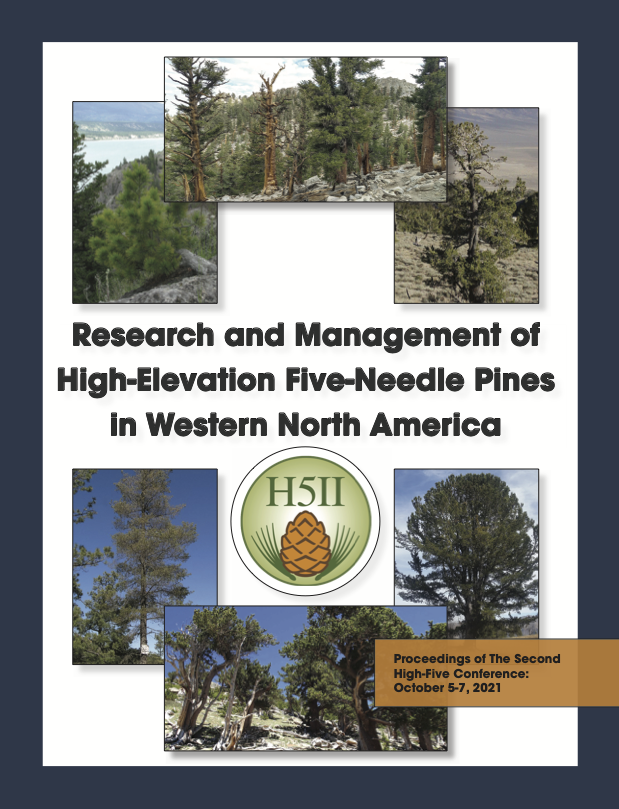
H5II Conference Proceedings Now Available
The Whitebark Pine Ecosystem Foundation is excited to announce the publication of the “Research and Management of High-Elevation Five-Needle Pines in Western North America: Proceedings of the Second High-Five Conference“. The full publication is available for download from The Press at Cal Poly Humboldt website or printed copies are also available for purchase online. The conference proceedings document features 13 submitted papers from the H5II Conference and a complete listing of the conference poster and talk abstracts that covered a tremendous variety of topics.
The H5II Conference was held virtually for three days in October 2021. The international conference brought together over 270 science and management professionals to learn about new management techniques, research findings and the latest trends in high-elevation, five-needle pine ecosystems. The event featured nine keynote and plenary speakers who are the world’s leading experts in the field, over 90 technical presentations with interactive Q&A discussions, a virtual field trip, a poster session and related events to engage the high-five pine community in this work.
WPEF hosts a high-five pine conference every 10 years to exchange information and best practices on the ecology and management of six high-elevation, five-needle pine species that are facing similar threats and decline due to ecological disturbances, disease and insect infestations, and climate change. These species include whitebark (Pinus albicaulis Engelm.), limber (P. flexilis James), southwestern white (P. strobiformis Engelm.), foxtail (P. balfouriana Grev. & Balf.), Great Basin bristlecone (P. longaeva D.K. Bailey) and Rocky Mountain bristlecone (P. aristata Engelm.) These decadal conferences and the published proceedings fulfill a critical mission of the WPEF to share information and spark collaboration on the science, management and restoration of these spectacular and unique trees.
Many thanks to the conference proceedings editorial team (Michael Murray, Cyndi Smith, Shawn McKinney and Peter Achuff) for their efforts in producing this document and funding support from the British Columbia Ministry of Forests. We are also grateful to the H5II Conference Committee, all of the presenters and attendees, conference sponsors and additional support from the Alumbra Innovations Foundation who made the event possible.

